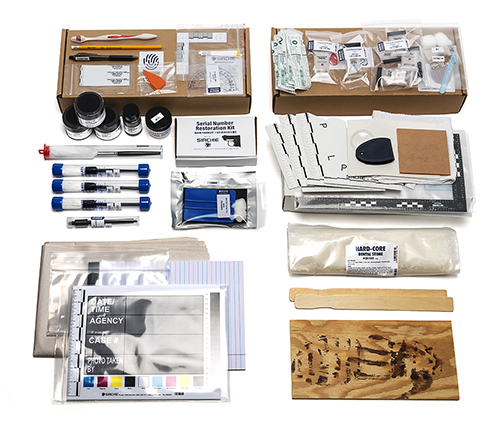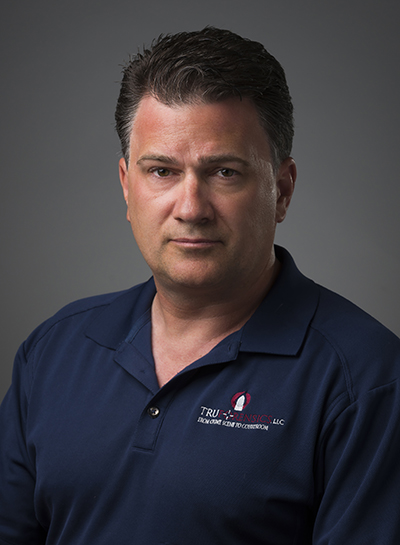- About Us
- Support
- Privacy Policy
- Contact us at +1 919-554-2244 or 1-800-356-7311
This class will be held at Kenton County Administration Building, 1840 Simon Kenton Way, 2nd Floor, Covington KY 41011.
Crime scene photography remains one of the most important aspects of any criminal investigation. Whereas notes and sketches document items of interest that the investigator recognizes and records, a properly trained crime scene photographer will record everything of significance at a crime scene that is visualized in the viewfinder. A permanent recording can prove invaluable days, months, and even years after the crime scene has been released by law enforcement. Failure to obtain images while at the crime scene, or in a laboratory setting, that properly portray the item(s) of evidence in the lab, or piece of evidence at the scene, will likely result in the photograph not being accepted by the court, and thus being deemed unsuitable for presentation to the jury.
CURRICULUM
Forensic Investigation (Evidence Discovery, Collection, Processing & Preservation)
The goals and objectives of the Crime Scene Investigator is the collection, preservation, packaging, transportation, and documentation of physical evidence left at the crime scene. With this evidence, a connection can be made between the victim, the scene, and the perpetrator of the crime. The base goal of this course is establishing methods and best practices for assessing, developing, collecting, and preserving the physical evidence.
Attendees learn proper set-up and crime scene documentation including photography and evidence marking / identification. Through lecture and practical exercises, proper methods are taught for discovery and lifting of latent fingerprints using powders, applicators, tape, chemicals, and other tools. Footprint and footwear evidence, often overlooked, is reviewed and methods for search and recovery are taught. Discovery and sampling of biological evidence, so critical in today’s forensic investigations for its DNA content, is reviewed with practical exercises with best practices for collection and preservation. Attendees also learn the proper packaging and preservation of various types of evidence, including bagging, boxing, labeling, and other methods. The course covers the forensic toolbox and the factors that lead to choosing certain methods.
- Crime scene documentation: photography, marking, logging
- Evidence collection: types, proper packaging, documentation
- Latent print development: fingerprint powders, applicators, chemicals, lifting devices
- Biological fluids including blood: search, discovery, testing, sampling
- Footwear impressions: search, development, collection
Bloodstain Pattern: Photography and Documentation
Homicides, shootings, and assault crime scenes can often contain blood spatter and patterns. The ultimate goal of this module is to train crime scene investigators with no formal training in Bloodstain Pattern Analysis to be able to expertly document the bloodstain patterns commonly found in crime scenes. Attendees learn to recognize the 14 different types of blood stains/patterns and understand the mechanics and physics that cause these as related to the actions involved in the crime. Attendees learn how the blood pattern expert can link the patterns together to better determine what acts were done, how persons moved in the scene, and in what position the were in during the incidents and why good documentation is so important.
Participants work in small groups, using techniques to search and identify blood using presumptive testing. Groups work together to thoroughly document the patterns found, building a documentation package that includes photography, measurement, and written reports. Everyone participates and is exposed to all aspects of blood pattern testing and documentation, building skills for future crime scenes.
Ballistics, Trajectory, GSR and Firearms
Attendees receive instruction on the theory behind wound ballistics and the role that bullet mass, velocity, and kinetic energy play in creating temporary and permanent wound paths in tissue. Medicolegal death investigation terminology will be stressed during this block of instruction so the attendee can correctly evaluate reports prepared by firearms experts, forensic pathologists, and forensic laboratory examiner-experts.
Attendees learn proper terminology and methodology for the investigation of shooting incidents. Discussion of the use of gun shot reside tests as well as a practical exercise emphasizes the value of GSR to an investigation. Methods for determining projectile size and bullet trajectory from entry angle are reviewed through practical exercises that allow the investigator to add firearm information as well as shooters position to the crime scene evidence


OST250KIT Contents:
1- Perforated Notepad, 8 1/2” x 11”
1- Biofoam Impression Kit
5- Tissue Paper, #15 weight
1- Blood Evidence on Plywood
1- PIC001 Photo Scale/ID Card, 8 1/2” x 11”
1- Crime Scene Documentation Forms
2- 131WL1 Hinge Lifter, 2” x 4”, white
6- FC343 Reversible Backing Cards, 3” x 5”
2- Orange Evidence Marking Pointers
1- 101L Silk Black Fingerprint Powder, 2 oz.
1- 107L Copper Fingerprint Powder, 2 oz.
1- SB201L Silver/Black Fingerprint Powder, 2 oz.
1- M114L Black Magnetic Fingerprint Powder, 1 oz.
3- 122L Standard Fiberglass Brush
1- 123LW Marabou Feather Brush, white
1- 125L Magnetic Powder Applicator
1- 127LW Rubber/GEL Lifters, 2” x 4”, white, 12 ea.
1- 145L 1.5” Frosted Lifting Tape
4- Index cards, 3” x 5”
1- SBQ100 Fingerprint Lifting Squeegee
1- SNR100K Serial Number Restoration Kit
1- PPS800 Forensic L-Scale, 105mm x 105mm
1- PPS600 Reversible Forensic L-Scale, 300mm x 150mm
1- LTF200PR Zero Edge Protractor
1- Hemastix Blood ID Reagent Strips, 10 ea.
1- Toothbrush
1- Ballpoint Pen, black ink
1- #2 Pencil
2- Cotton Balls
2- Ziptop Bag, 9” x 12”
1- Orange Acrylic Square, 4” x 4”
1- 379M Attached case Magnifier
3- SDM100E Disposable Evidence Markers, inches
2- Wooden Paint Stirrers
3- Terry Cloth Towel
6- Cotton-Tipped Swabs
1- GLT101W GELifters, 5.2” x 7.2”, white, 10 each
1- HCB1002 Hard-Core Dental Stone, 2 lbs.
1- KCP247C5 Sterile Water, 5ml vial
1- OSTBK100 Blood Evidence Samples on paper
5- PBID1005 Blood ID Tests, Kastle Meyer Reagent
1- PBID2001 Blood ID Tests, McPhail’s Reagent
1- PSID1001 Seminal Fluid ID Test


Your Instructor
David G. Pauly, Professor, Forensic Science Program, Methodist University, Fayetteville, NC, retired from The U.S. Army Criminal Investigation Command as a Special Agent-in-Charge/Commander, Paratrooper, and Forensic Science Officer.
Dave performed duties in numerous U.S. States and foreign countries and frequently worked with local, state, and other federal agencies, as well as various non-U.S. law enforcement entities in Panama, South Korea, Afghanistan, Haiti, Kuwait, Saudi Arabia, Israel, Turkey, Egypt, Canada, Guam, and Nigeria.
Prof. Pauly holds a Master of Forensic Science degree from The George Washington University where he taught summer sessions for several years while also developing the Forensic Science Program at Methodist University from its inception to a thriving program where young students learn a comprehensive curriculum involving crime scene forensic science and criminal investigations.
Dave graduated the FBI National Academy (Session 195), Canadian Police College - Major Crimes Course, Miami-Dade Police Department - Bloodstain Interpretation Course, and National Fire Academy - Arson Investigation Course, and has completed numerous other courses, seminars, symposiums, and classes in criminal investigations, forensic science, and other law enforcement related topics.
Dave is an active Fellow of The American Academy of Forensic Science, and is a current, or past member of the International Association of Identification, North Carolina Chapters of the IAI and FBINAA, International Association of Bloodstain Pattern Analysts, North Carolina Homicide Investigator’s Association, The Vidocq Society, American Investigative Society of Cold Cases (AISOCC), and various other professional law enforcement and/or forensic science associations.
For More Info Contact:
Angie Keller Supervising Technician
akeller@covingtonky.gov
Minimum enrollment will be 18 students with a maximum enrollment of 25 students. The cost per student is $650.00. All materials, supplies and equipment will be supplied by Sirchie. Students will be responsible for their own transportation and related per diem expenses. Individuals must register on-line no later than 5 days prior to the class, Sirchie reserves the right to cancel this class if the minimum number (18) students has not been met.


